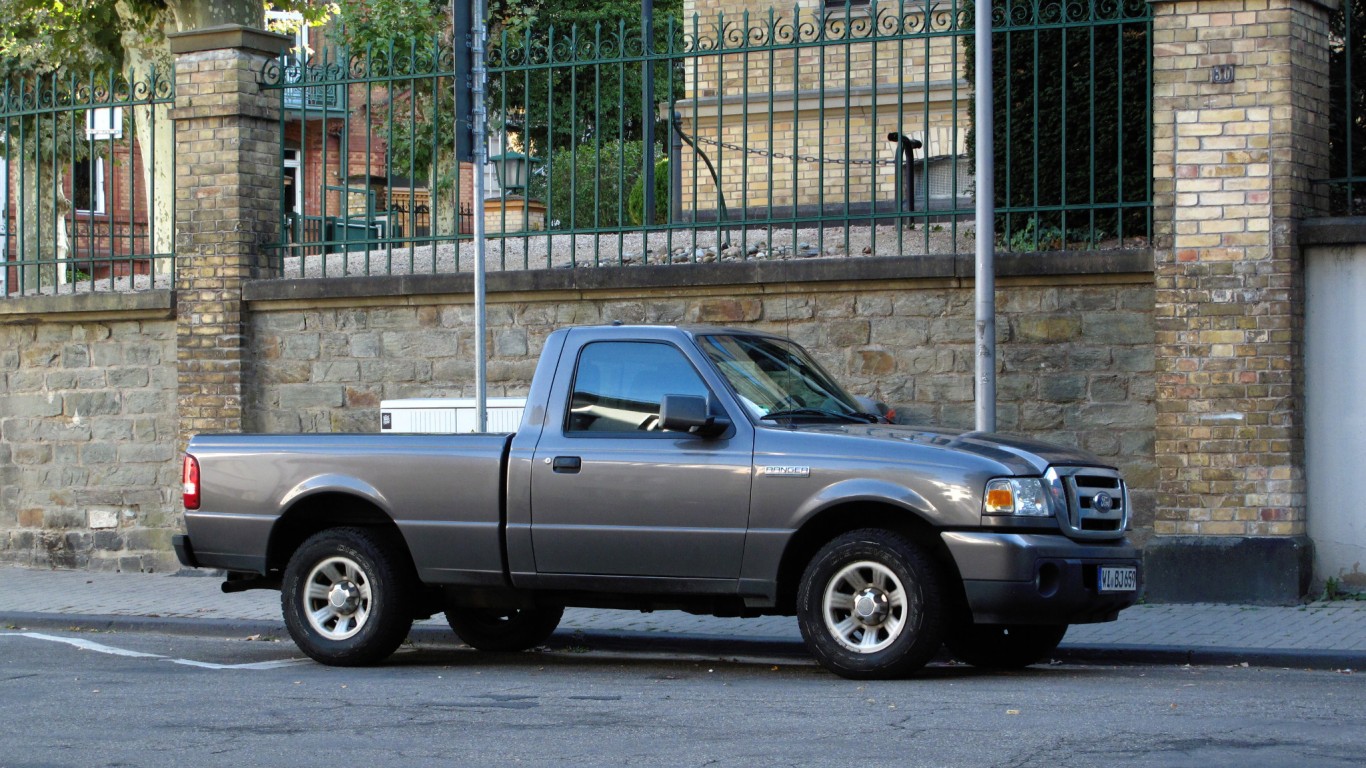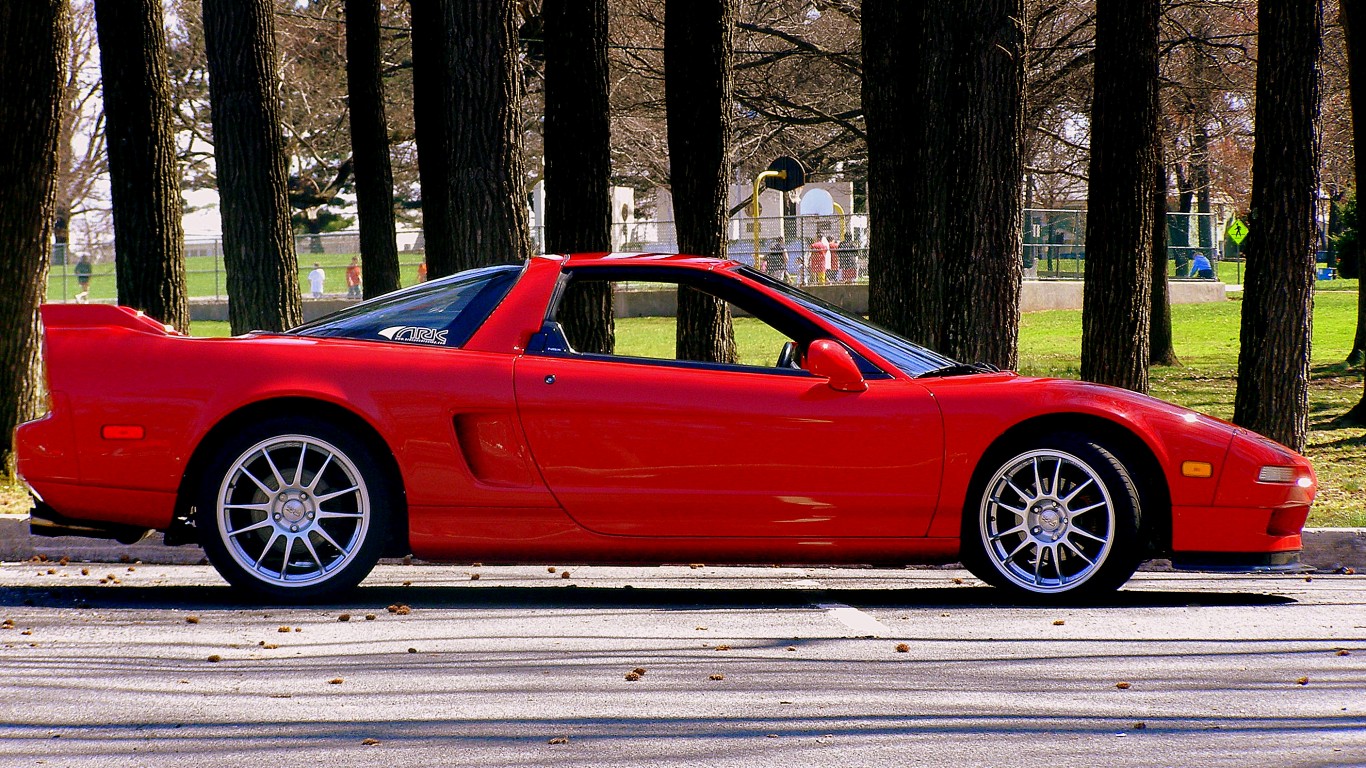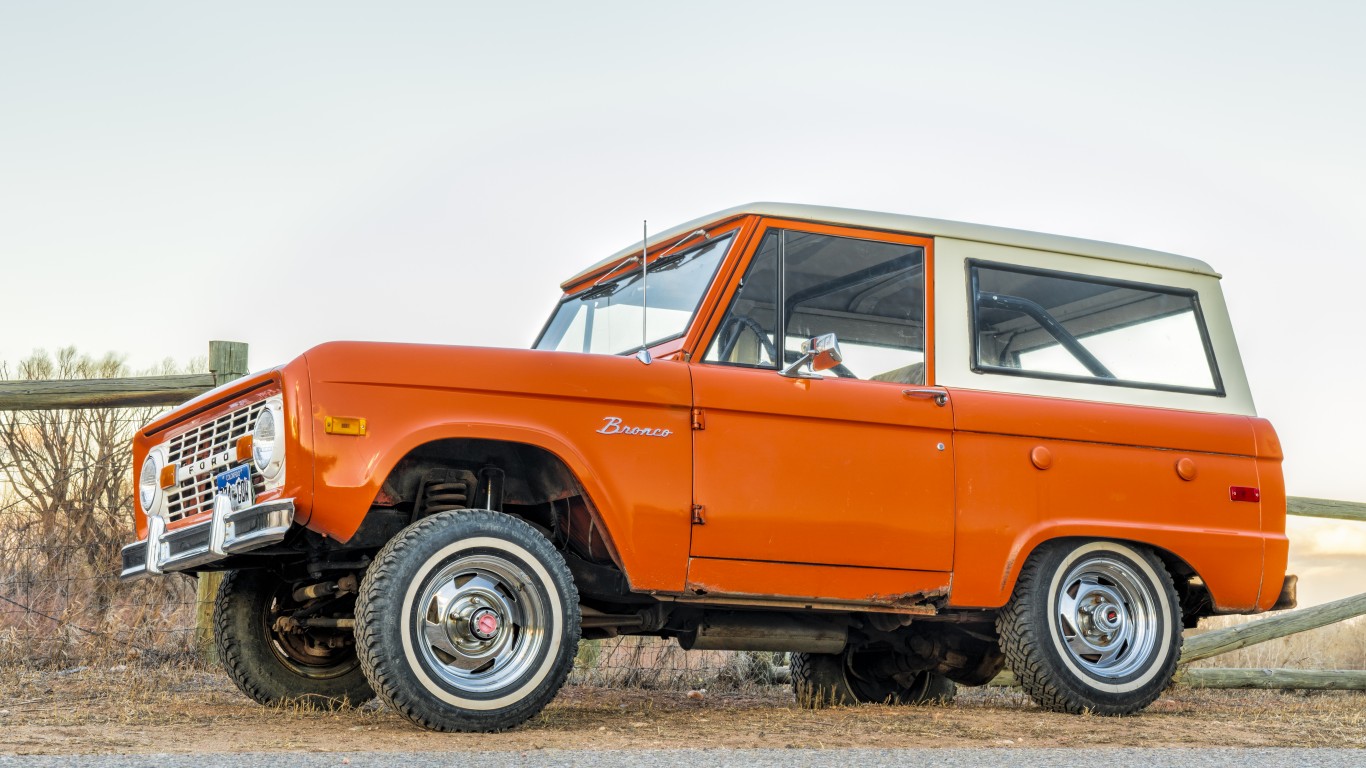
Brand equity is the commercial value of a brand that can be generated from consumer perception of a brand name. In business lingo, this is called an intangible asset. It’s important for any company, but it’s supremely valuable to automakers. Not only can vehicle brands conjure feelings of nostalgia and sentimentality, but they propagate consumer loyalty that can last a lifetime.
Automotive brands are so valuable that even when a car, pickup truck, or SUV is discontinued, companies aggressively protect their brand names in case they want to revive them later. Earlier this year, Ford Motor Company filed a new U.S. trademark application for the Thunderbird name despite a failed attempt 16 years ago to bring back a car it discontinued in the ‘90s after a 42-year run. Find out how 30 iconic car models got their names.
Vehicle brands come and go, and sometimes they’re resuscitated. To determine comeback cars that got a second life, 24/7 Wall St. reviewed automotive history to find vehicles with nameplates that were discontinued in the U.S. market then brought back years later.
The Dodge Charger was revived twice since 1966. Rolls-Royce brought its Ghost brand back to life in 2009 for the first time in over 80 years. Often, the revived vehicles only offer style hints about their predecessors. The upcoming GMC Hummer, for example, is an electric pickup truck, bearing little resemblance to the original, gas-guzzling multi-ton H1 of the 1990s. On the other hand, some cars don’t need to be revived — these are the cars that stand the test of time.
Here’s a list of comeback cars that got a second life
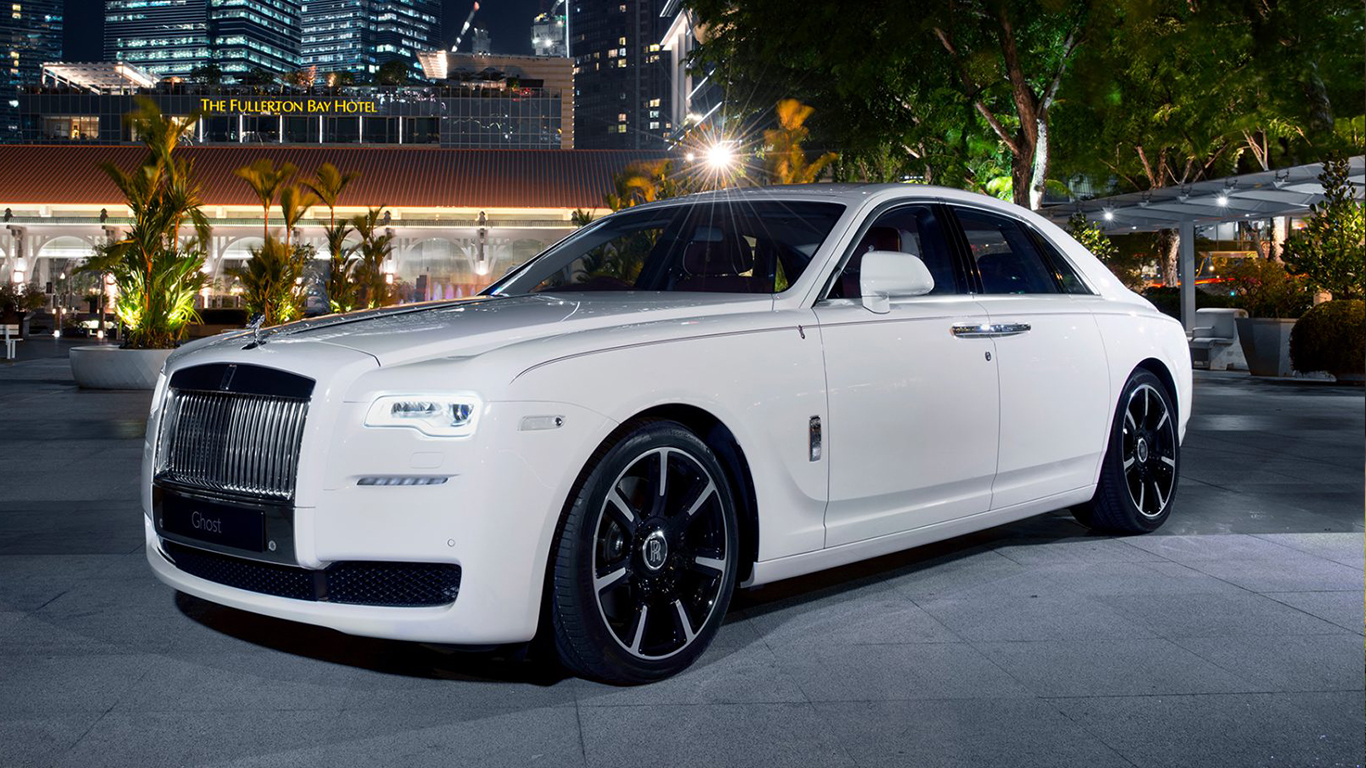
1. Rolls-Royce Ghost
> First run: 1906-1926
> Revival(s): 2009-present
Named after the original Silver Ghost, last seen in the Roaring Twenties, the Rolls-Royce Ghost full-size ultra-luxury sedan is now in its second generation after receiving significant changes in 2014. The 2022 Ghost II isn’t expected to include major upgrades from the 2021 model, but there are rumors it could be the last Ghost with a 12-cylinder engine.
[in-text-ad]
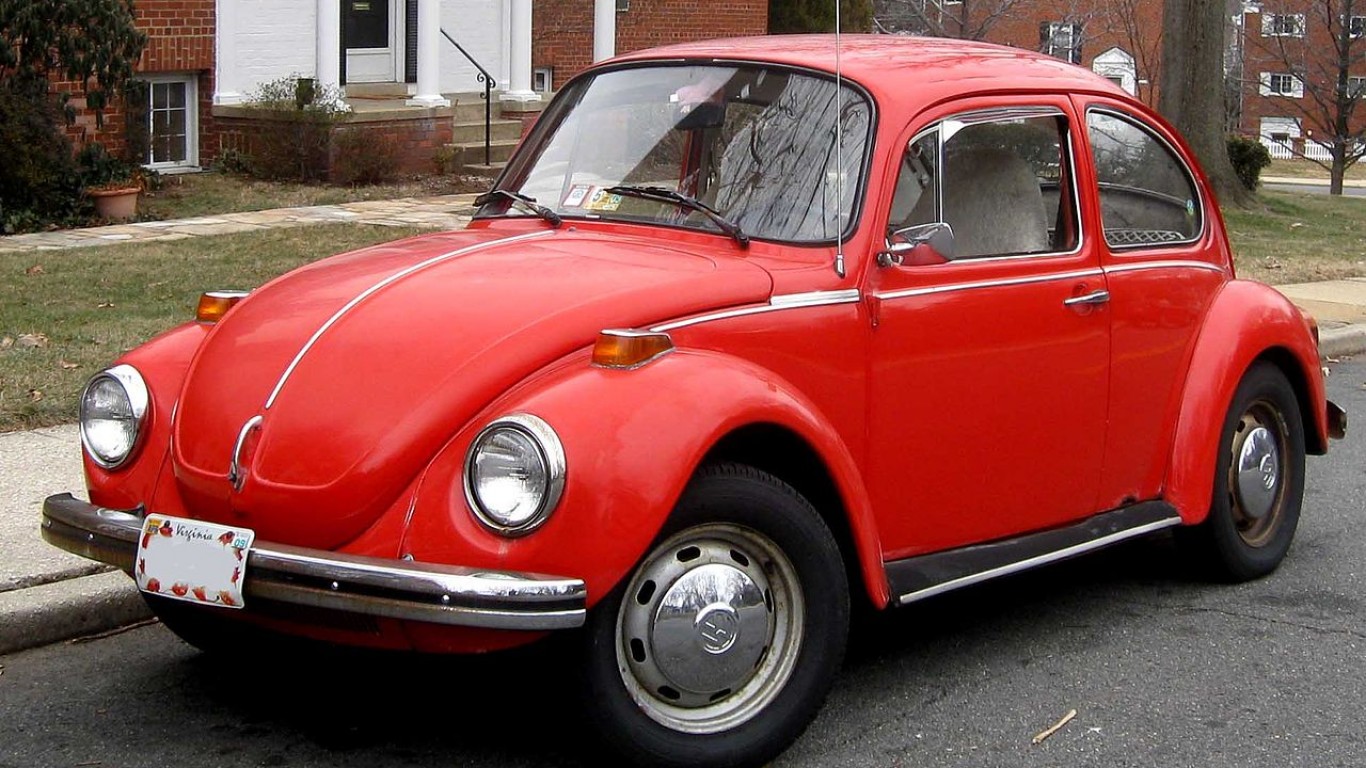
2. Volkswagen Beetle
> First run: 1949-1979
> Revival(s): 1997-2019
The KdF-Wagen was the product of Adolf Hitler’s vision of creating a cheap car for the masses, but manufacturing of what would later be called the Beetle was interrupted until the British restarted production in post-war Germany. The first “Type 1 Beetle” arrived in the U.S. in 1949. Sales in the U.S. market ended 30 years later, but global sales continued. The New Beetle was introduced in the U.S. in 1997, but VW announced in 2018 the 2019 model would be the final edition. Only about 1.7 million New Beetles were sold compared to more than 21 million for the original Bug.
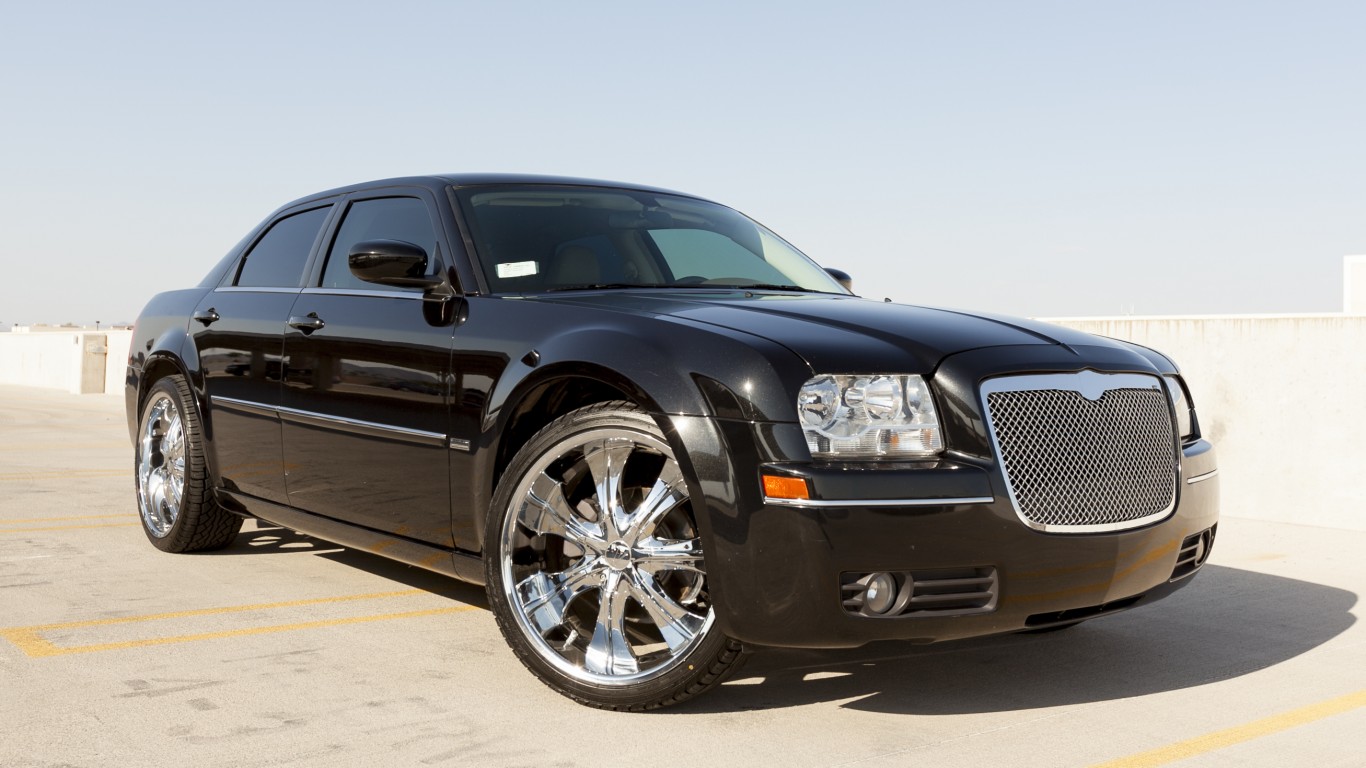
3. Chrysler 300
> First run: 1955-1965
> Revival(s): 1999-present
The original Chrysler 300 was built to implement Chrysler’s new HEMI V8 engine developed in 1951. At 300 horsepower, it was one of the fastest American cars at the time, even showing up on the NASCAR circuit during its 1955 season. The 2022 Chrysler 300 is still available with a V8, an unusual option for a contemporary full-size sedan.
4. Ford Thunderbird
> First run: 1955-1997
> Revival(s): 2002-2005
Ford introduced the Thunderbird in order to add, in its words, a “true Ford sports car” to its product line. With a V8 engine and a top speed of 100 mph starting, the two-door convertible lived up to the sporty expectations of a post-war generation of American car enthusiasts. By the ’90s, however, the Thunderbird had evolved into an uninspiring sedan. Ford’s attempt to resuscitate the car to appeal to nostalgic boomers was short-lived.
[in-text-ad-2]

5. Fiat 500
> First run: 1957-1975
> Revival(s): 2007-present
Much like the Volkswagen Beetle, the Fiat 500 was designed to be a basic and affordable small car for the masses, designed to navigate the narrow streets of Italian villages. Fiat discontinued the 500 in a failed attempt to replace it with its boxy Fiat 126. Today, the only new Fiat model available in the U.S. is the 2022 Fiat 500X, a subcompact SUV.
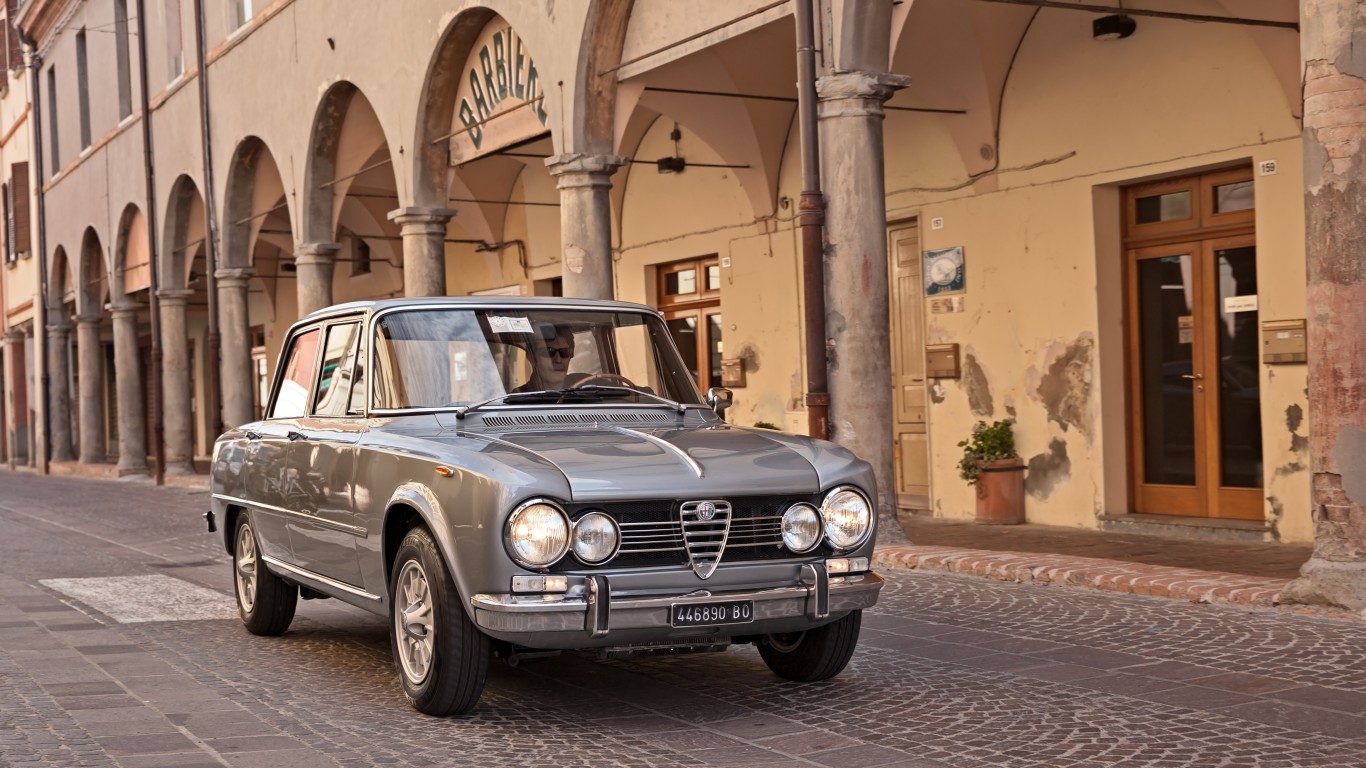
6. Alfa Romeo Giulia
> First run: 1962-1978
> Revival(s): 2016-present
The original Alfa Romeo Giulia was an instant hit for its cool design, lively handling, and impressive acceleration that stood out among sporty compact sedans of the 1960s. Alfa Romeo discontinued most Giulia versions by the mid-60s, and by the late-70s the model was retired. The revived Giulia is available in four trims in the U.S. for its 2022 model year.
[in-text-ad]
7. Jeep Gladiator
> First run: 1962-1971
> Revival(s): 2019-present
The original Jeep Gladiator was a product of Willys Motors’ effort to diversify the brand away from the Willys (nicknamed “jeeps” by U.S. soldiers), which was used during World War II and became the civilian Jeeps that exist to this day. The Gladiator replaced the Willys-Overland Truck that was marketed to farmers. Though Jeep (now owned by European car conglomerate Stellantis) continued to make trucks until the ’80s, the Gladiator name was discontinued until its revival in 2019 to grab a piece of the lucrative U.S. market for pickup trucks.
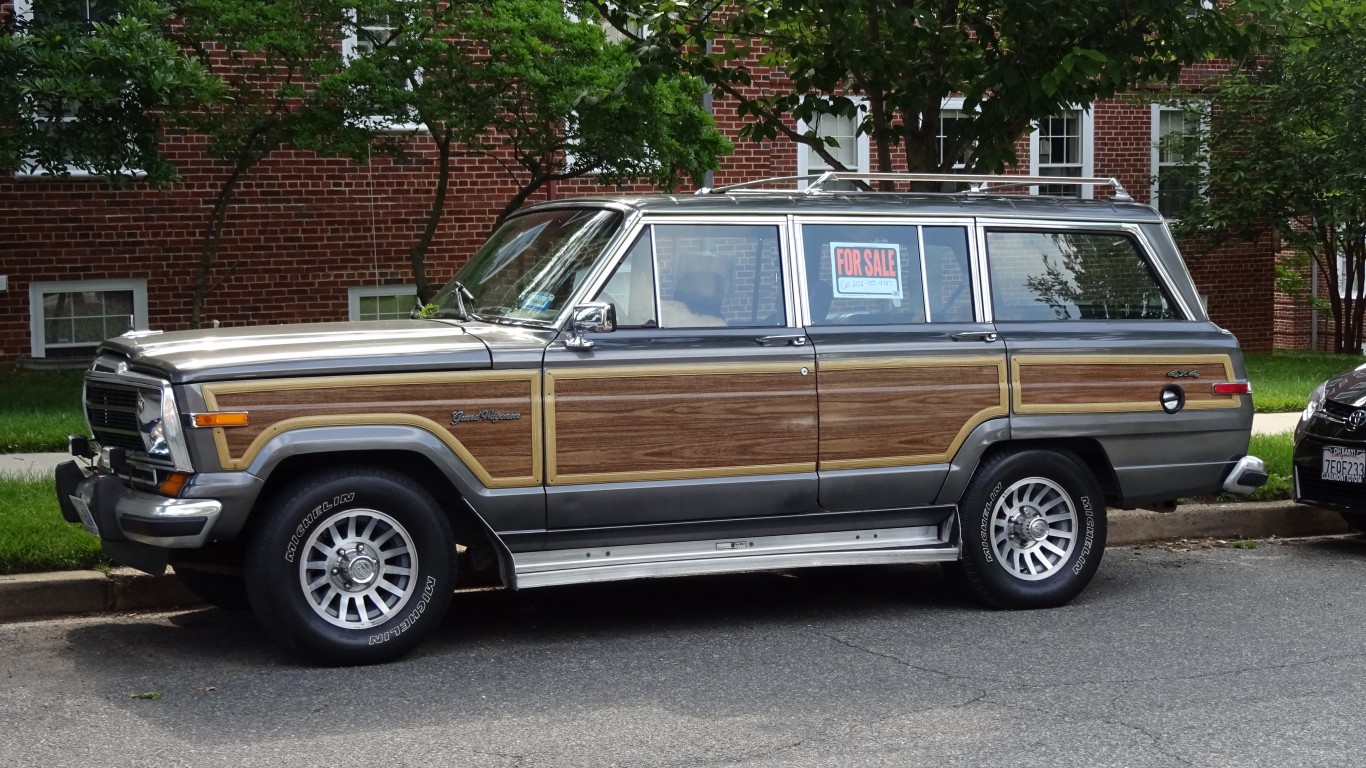
8. Jeep Wagoneer
> First run: 1962-1993
> Revival(s): 2021-present
Under the ownership of American Motors Corporation, the Jeep Wagoneer emerged in the ’60s as the “Full-Size Jeep,” a precursor to the modern large SUV. The Wagoneer became larger in the ’80s and was rebranded the Grand Wagoneer before AMC (then primarily owned by French automaker Renault) went out of business. Jeep merged into Chrysler in 1990. The resurrected Wagoneer went into production last year for the 2022 model year.
9. Chevrolet Malibu
> First run: 1964-1983
> Revival(s): 1997-present
Like many American sedans of the 1960s, the Chevrolet Malibu was built offering a growling V8 engine and 300 horsepower. The Malibu was discontinued after an unsuccessful effort to market more fuel efficient versions in the wake of the 1970s energy crisis and the rise of Japanese imports. The revived Malibu has had a decent run, but the 2022 Malibu may be the last as Chevrolet (owned by European car conglomerate Stellantis) leans into SUVs and trucks.
[in-text-ad-2]

10. Ford Shelby GT500 Mustang
> First run: 1965-1970
> Revival(s): 2007-present
The Ford Mustang remains one of the most renowned of the American muscle cars. The Shelby Mustang is the brand’s high-performance variant seen in films from “Bullitt” (1968) to “John Wick” (2014). The latest of the revived Shelby GT500s is touted by Ford as its most powerful street-legal Ford in the company’s history.

11. Chevrolet Camaro
> First run: 1966-2002
> Revival(s): 2010-present
The Chevrolet Camaro is one of the three most-recognized American muscle cars, built to go head-to-head against the Ford Mustang. The vehicle went into production in 1966 for the 1967 model year as a two-door coupe with a convertible option. Falling demand for sports coupes caused Chevrolet to discontinue the brand. It was resurrected for the 2010 model year. The 2022 Chevrolet Camaro can be souped up with a massive 9.4-liter V-8 “drag-racing special,” but that upgrade pushes the price tag over $100,000.
[in-text-ad]
12. Dodge Charger
> First run: 1966-1978
> Revival(s): 1982-1987, 2006-present
The Dodge Charger has been retired twice since it was first introduced in the same year as the Camaro. Over the course of its first two iterations, the Charger evolved away from being performance-focused and spent a short period as a lackluster front-wheel drive coup before production ended in 1987. The modern Charger has returned to its sportier roots.

13. Ford Bronco
> First run: 1966-1996
> Revival(s): 2020-present
Like the Jeep Wagoneer, the Ford Bronco was a precursor to the SUV — not quite a pickup truck, but close. Despite internet hearsay the Bronco’s demise was in part because of its role in the infamous and widely televised Los Angeles car chase of O.J. Simpson in 1994, it was the rise of the SUV in the ’90s that put an end to the Bronco’s first run. Ford revived a radically new Bronco in 2020 for the 2021 model year.
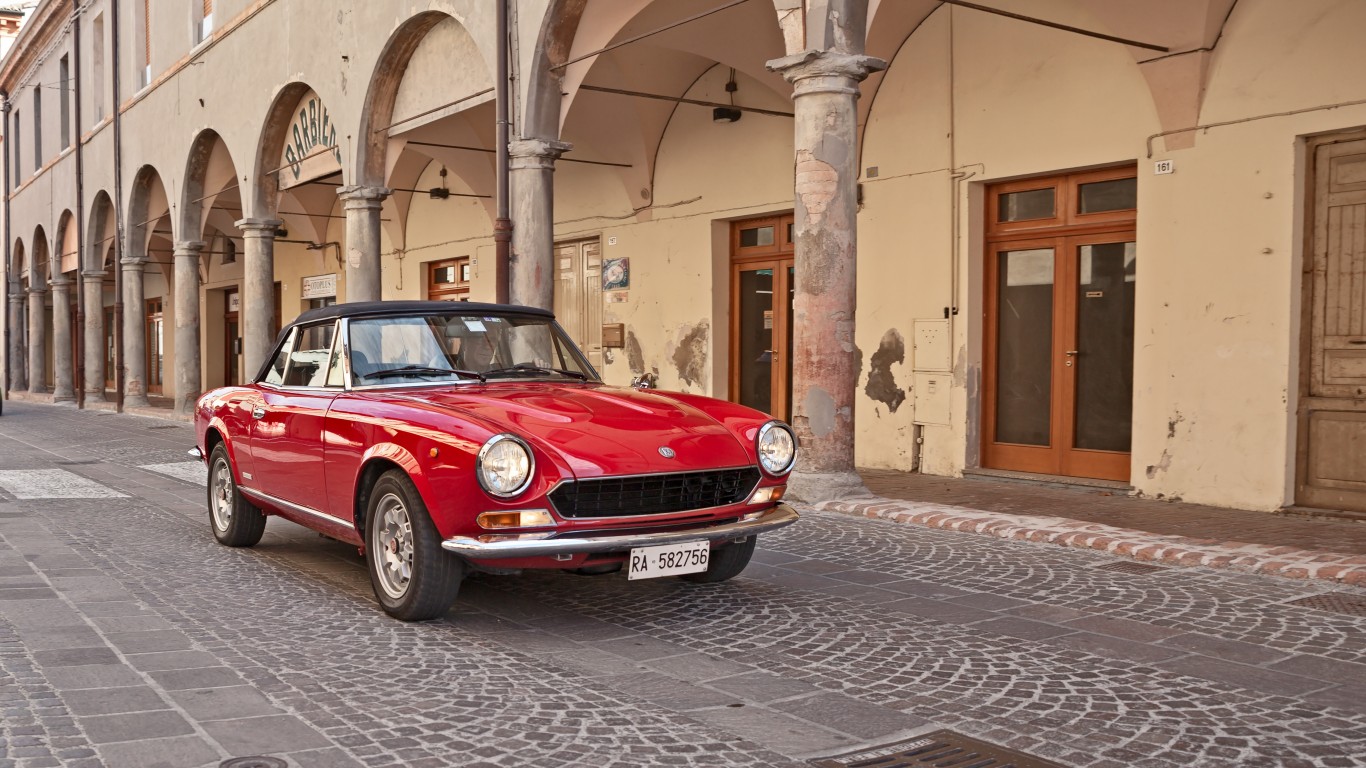
14. Fiat 124 Spider
> First run: 1968-1985
> Revival(s): 2016-2020
Styled by the famous Italian design house Pininfarina, the sexy rear-drive Fiat 124 Spider was introduced as the sportier version of the Fiat 124 sedan. Its four-cylinder engine was the brainchild of a former Ferrari engineer, and its folding soft top was designed so that a driver could take it down with one hand while idling at a stoplight. Fiat killed its revived 124 Spider after the 2020 model year due to poor sales.
[in-text-ad-2]

15. Chevrolet Blazer
> First run: 1969-1993
> Revival(s): 2019-present
Chevrolet introduced the Blazer to compete with the off-roaders like the International Harvester Scout (1961-1980), the Ford Bronco (1966-1996), and the Jeep Cherokee. Versions of the Blazer included the 1976 K5 Blazer Chalet with a pop-up camper, which came with a propane stove, icebox, sink, and dinette table. The 2022 Blazer takes its cue from the modern SUV.
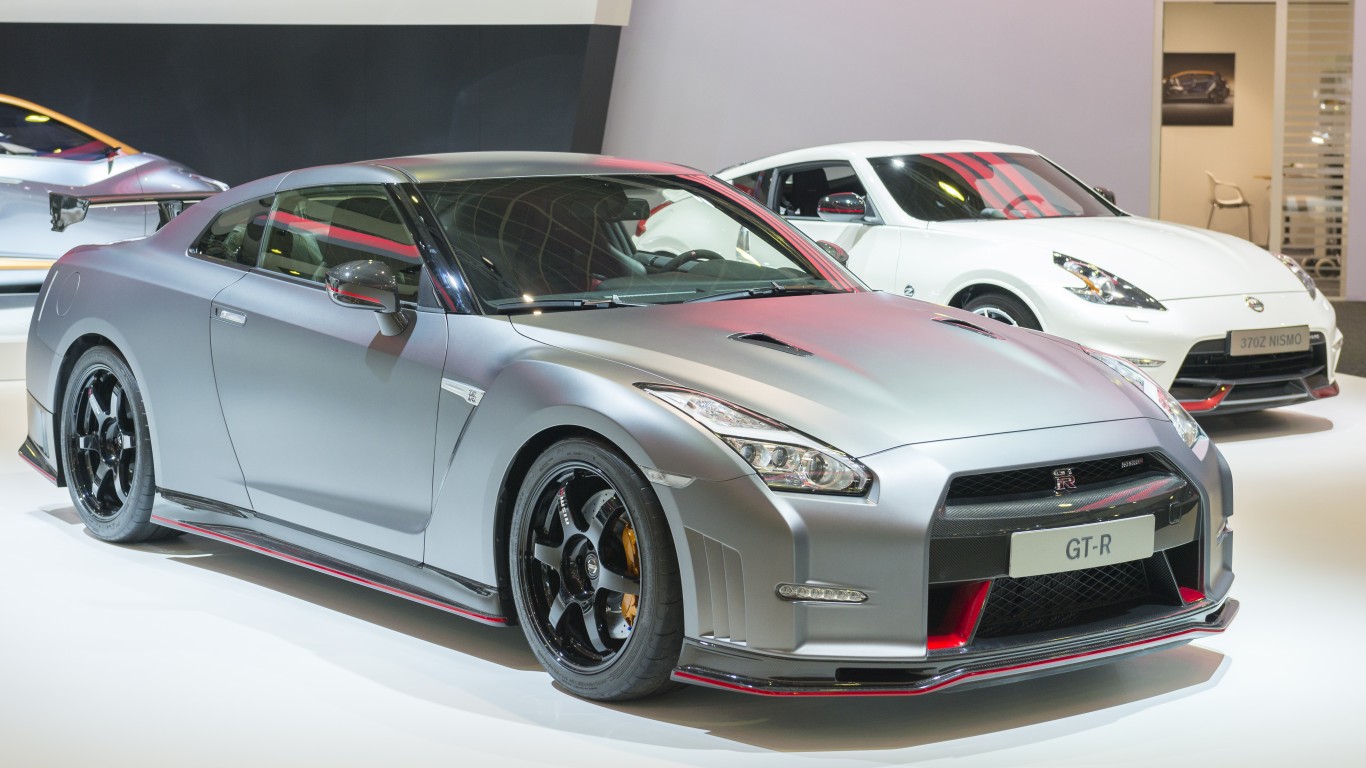
16. Nissan GT-R
> First run: 1969-1973
> Revival(s): 1989-2002, 2007-present
The GT-R emerged as a high-performance version of the Nissan Skyline, but it was abruptly discontinued in 1973 due to the global oil crisis and stricter government emissions standards. It returned after a 16-year hiatus with all-wheel drive and Nissan’s famed RB26DETT turbocharged engine. This revived GT-R is considered the real precursor to the modern version. The eye-grabbing 2022 Nissan GT-R has 600 horsepower and comes standard with all-wheel drive.
[in-text-ad]
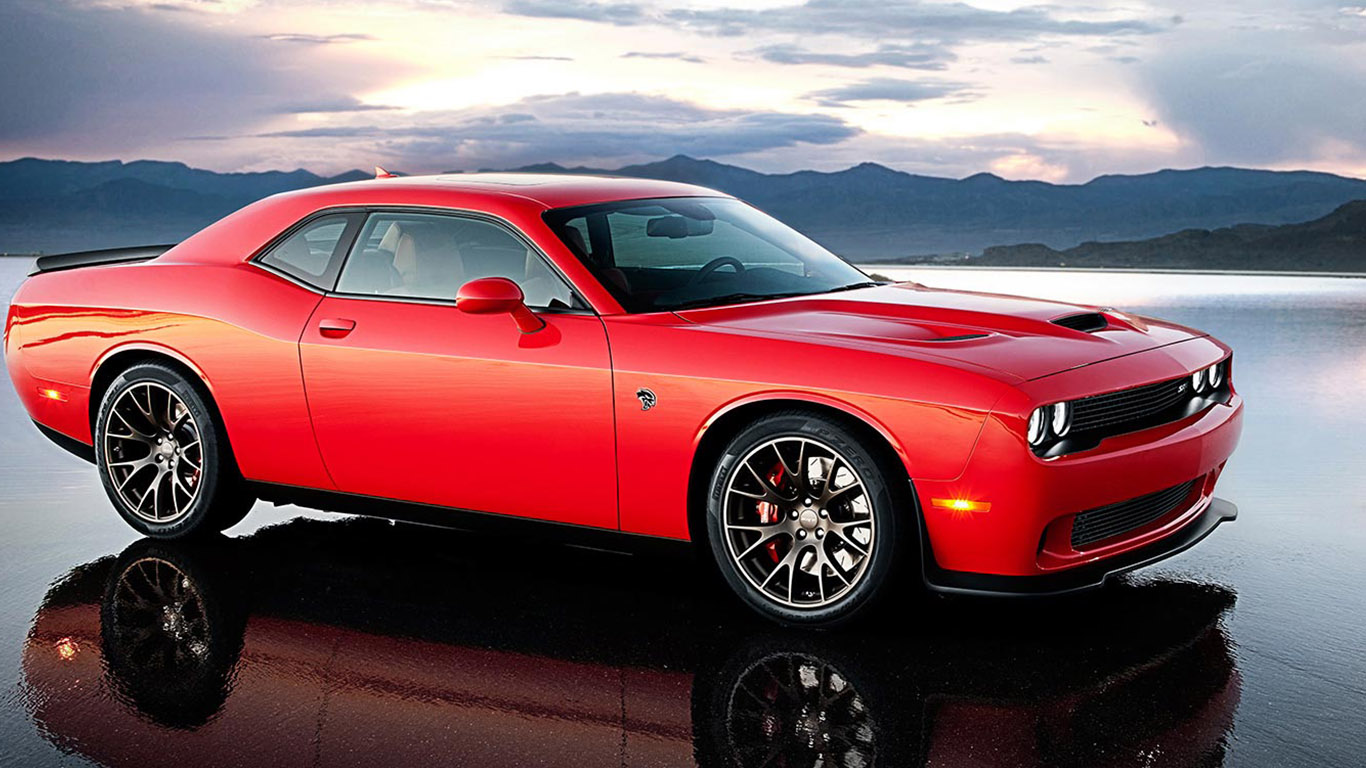
17. Dodge Challenger
> First run: 1970-1974
> Revival(s): 1977-1983, 2008-present
The Challenger name was originally used to market Dodge’s unrelated 1959 Coronet Silver Charger. The name seemed a good fit for Dodge’s rear-wheel drive muscle car that debuted in the 1970 model year. The global oil crisis and demand for smaller cars ended the Challenger’s first run. The second run barely lasted longer. Its third run in the new millennium has been the most successful.
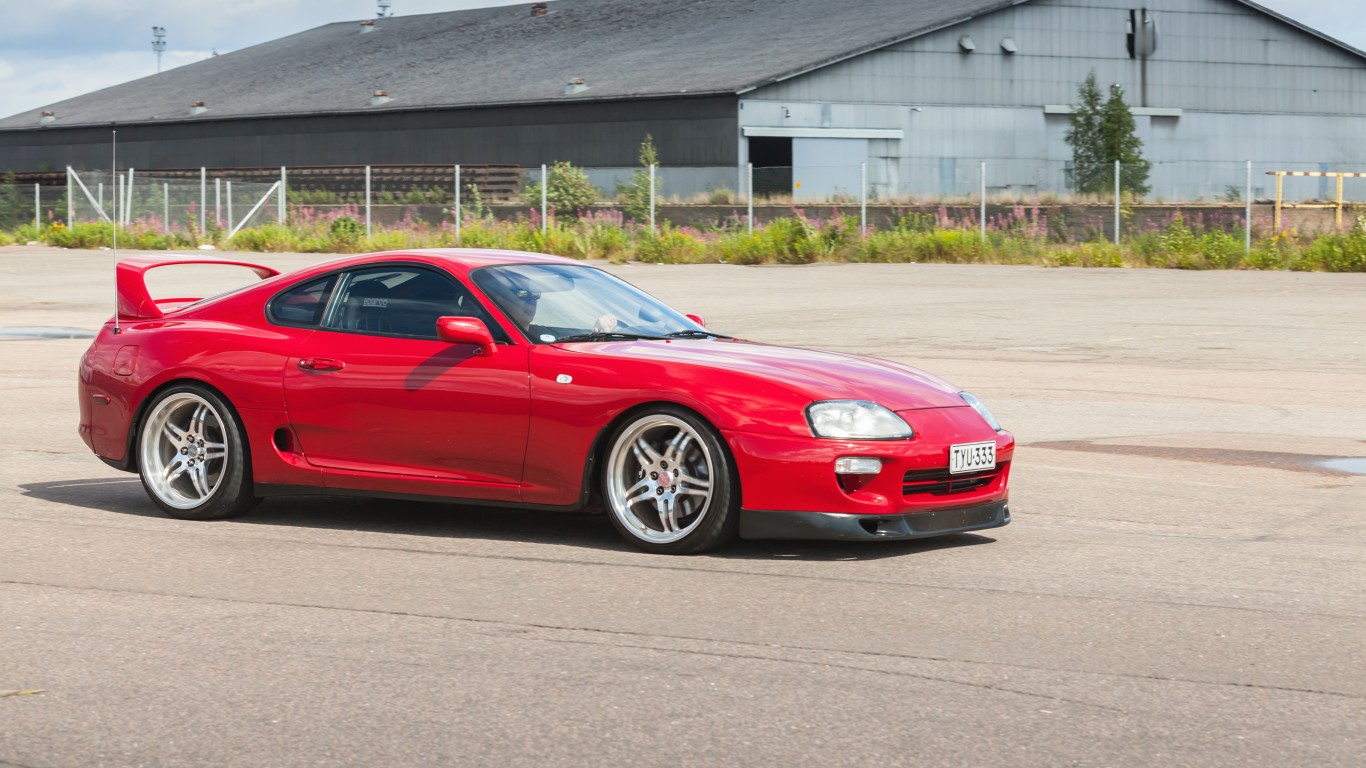
18. Toyota Supra
> First run: 1978-1999
> Revival(s): 2019-present
The first Toyota Celica Supra rolled off the assembly line in 1978 for the 1979 model year. The “Celica” name was initially used as a reference to the chassis it shared with the Toyota Celica into the ’80s. Though some models are admired by today’s car collectors, the 1994 Toyota Supra was permanently banned from the U.S. due to serious long-term reliability concerns. The 2022 Toyota Supra has been called “one of our favorite sports cars” by Car & Driver magazine.
19. Ford Ranger
> First run: 1982-2011
> Revival(s): 2019-present
Ford introduced the Ranger to replace the Courier, manufactured under partnership with Mazda, and it became a popular compact pickup truck. Mazda sold the Ranger globally as the Mazda B-Series from 1994 to 2009. Ford stopped selling the Ranger in the U.S. in 2011 due to flagging demand for small pickups, but the truck continued to be sold globally. An all-new Ranger returned to the U.S. for the 2019 model year.
[in-text-ad-2]
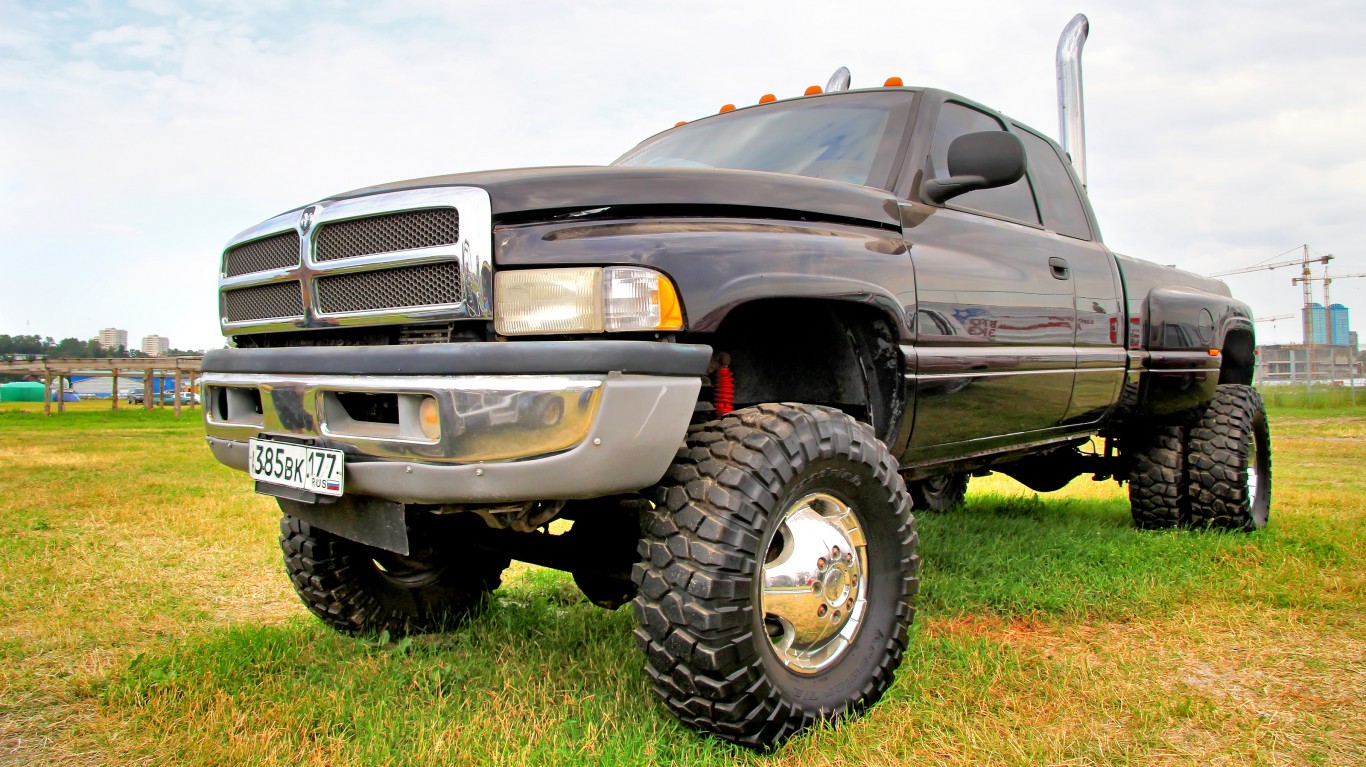
20. Ram Dakota
> First run: 1986-2011
> Revival(s): Expected in 2024
The Ram Dakota was originally sold under the Dodge brand and was a stalwart of the mid-size pickup truck market for a quarter century. It was discontinued as U.S. consumers pivoted to larger trucks. Auto industry watchers speculate the revived Ram Dakota could be out in the 2024 model year.
21. Acura NSX
> First run: 1991-2005
> Revival(s): 2016-2022
The original NSX was first sold in Japan under the Honda name in 1990. A year later, the car went on sale in the U.S. bearing the Acura badge. The NSX was a considerable investment risk for Honda, which wanted to prove it could build a European-style premium sports car. Despite its high-end tooling, sales declined enough that Honda discontinued the NSX after 2005. Honda says the revived NSX will be discontinued after the 2022 model year.
[in-text-ad]

22. GMC Hummer
> First run: 1992-2010
> Revival(s): 2021-present
The notorious gas-guzzling symbol of American excess started out as the HMMWV military “jeep on steroids,” manufactured by South Bend, Indiana-based AM General. Early 7,000-pound Hummers H1s closely resembled their military counterparts and got 10 miles to the gallon. GM bought the brand from AM General in 1999 and started producing smaller versions until the Great Recession. The revived GMC Hummer is poised to make a comeback as an electric pickup truck for the 2022 model year.
In 20 Years, I Haven’t Seen A Cash Back Card This Good
After two decades of reviewing financial products I haven’t seen anything like this. Credit card companies are at war, handing out free rewards and benefits to win the best customers.
A good cash back card can be worth thousands of dollars a year in free money, not to mention other perks like travel, insurance, and access to fancy lounges.
Our top pick today pays up to 5% cash back, a $200 bonus on top, and $0 annual fee. Click here to apply before they stop offering rewards this generous.
Flywheel Publishing has partnered with CardRatings for our coverage of credit card products. Flywheel Publishing and CardRatings may receive a commission from card issuers.
Thank you for reading! Have some feedback for us?
Contact the 24/7 Wall St. editorial team.
 24/7 Wall St.
24/7 Wall St.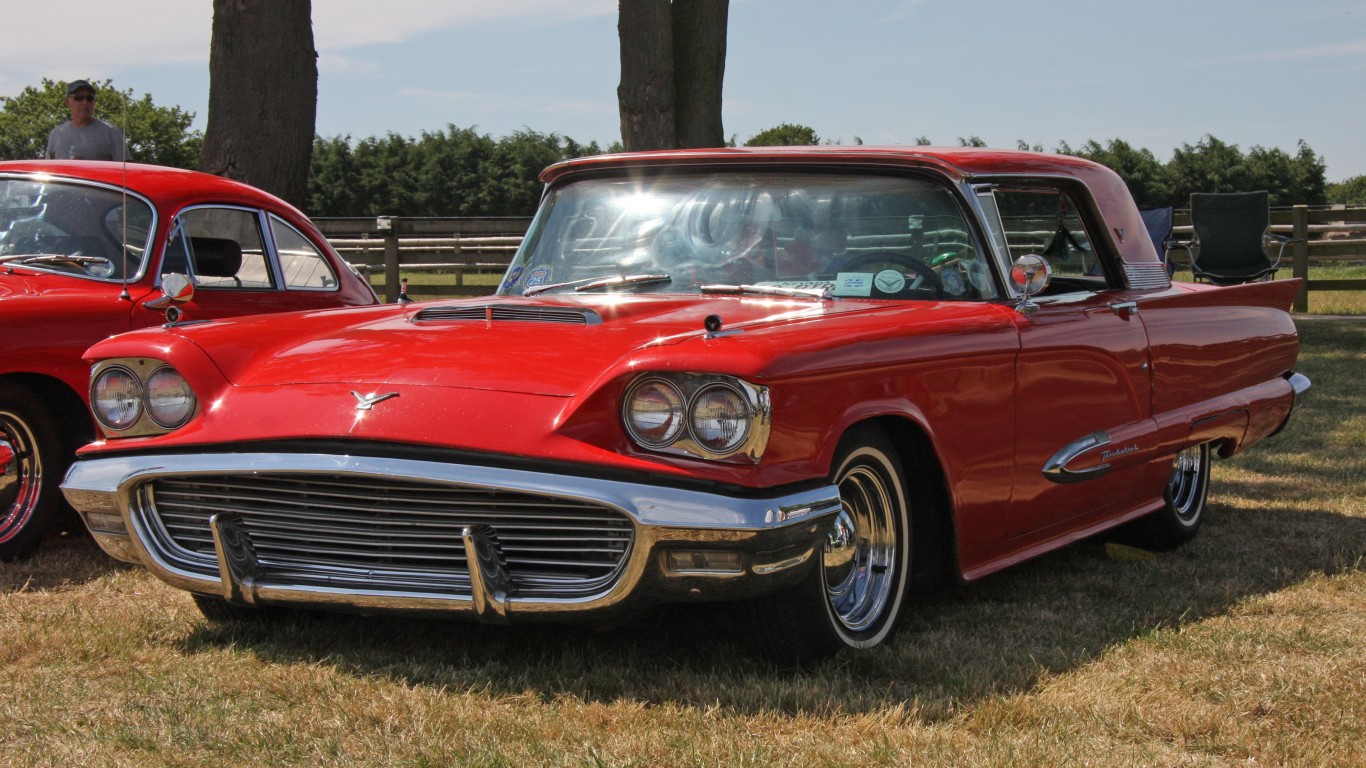
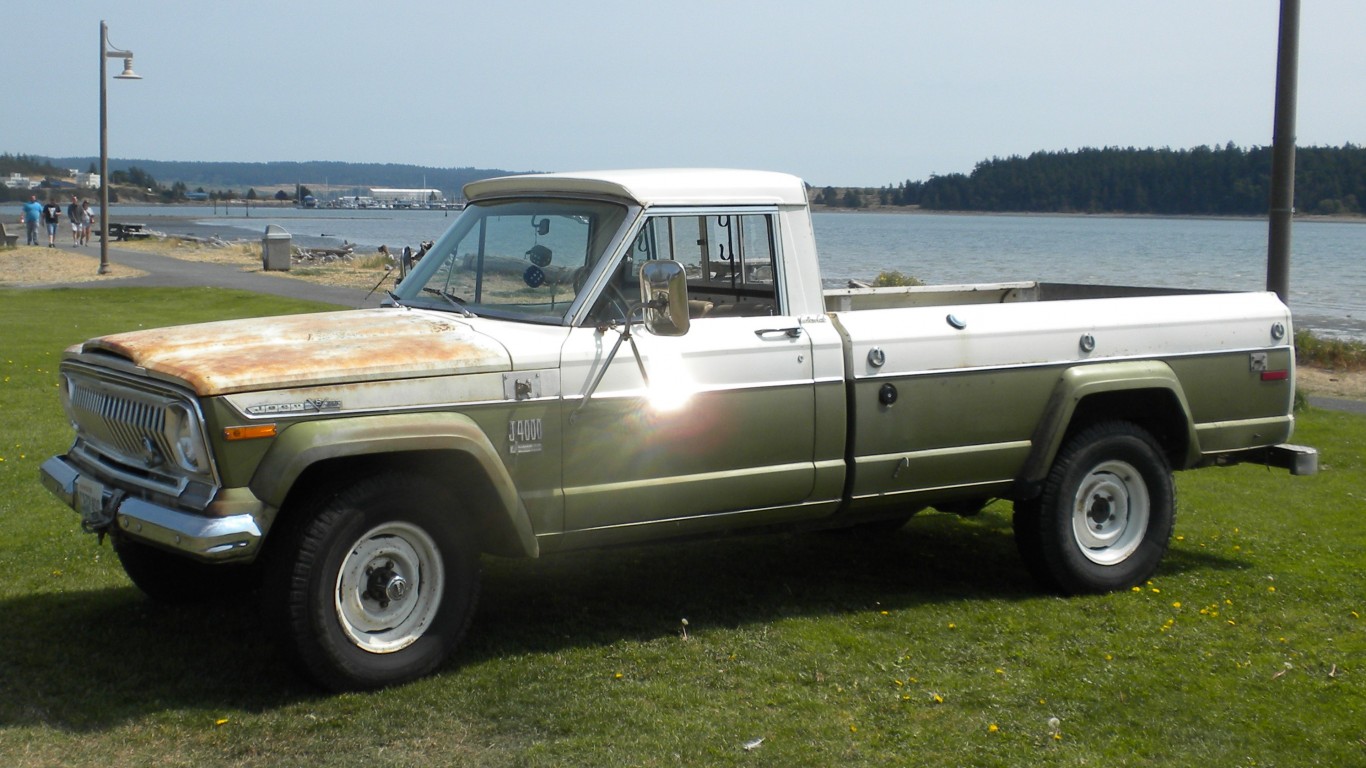
 24/7 Wall St.
24/7 Wall St.
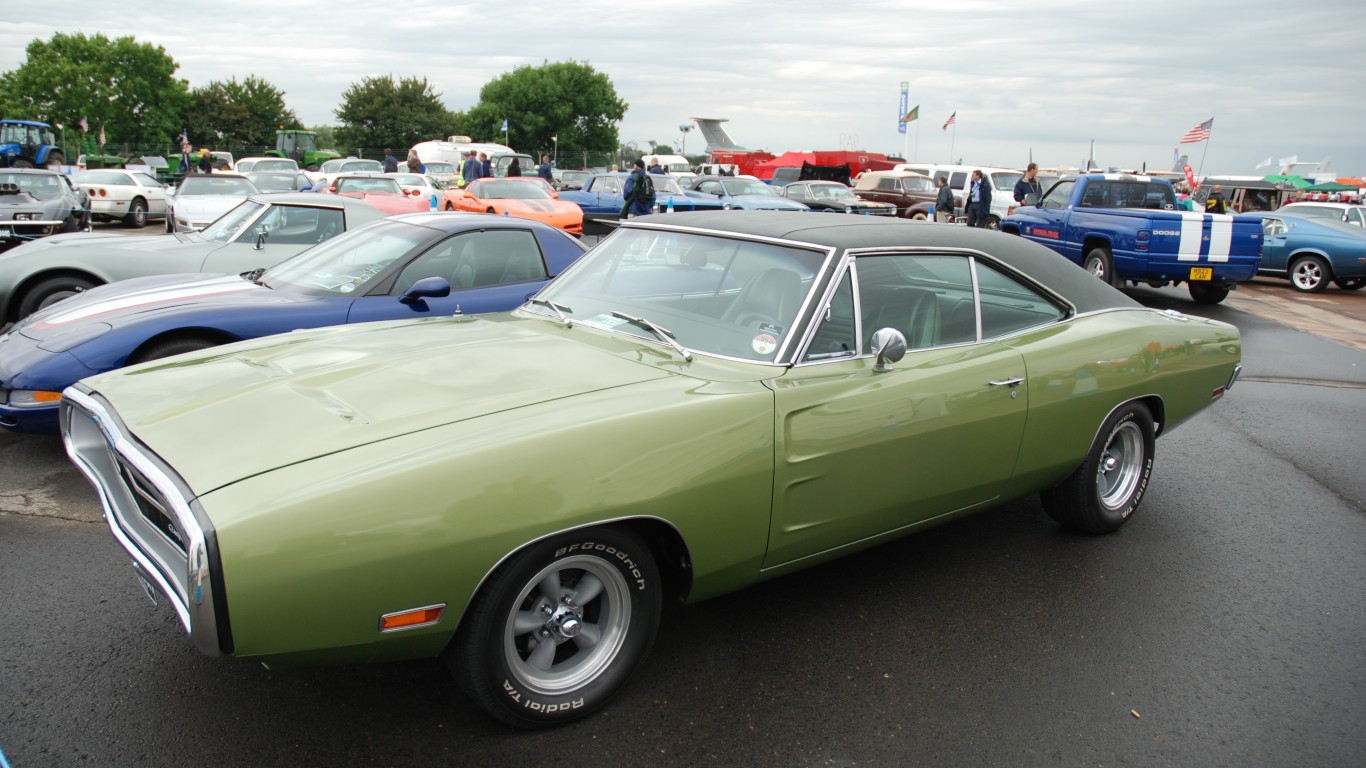
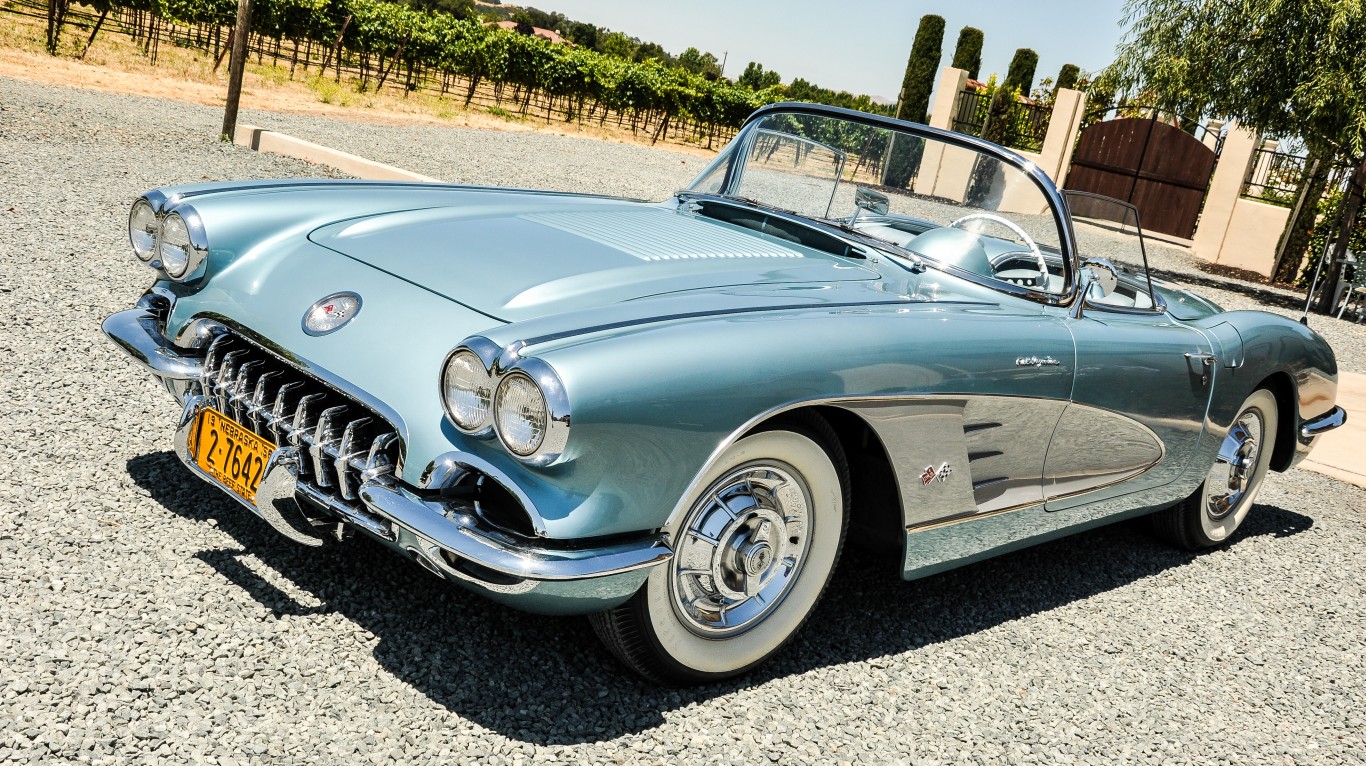 24/7 Wall St.
24/7 Wall St.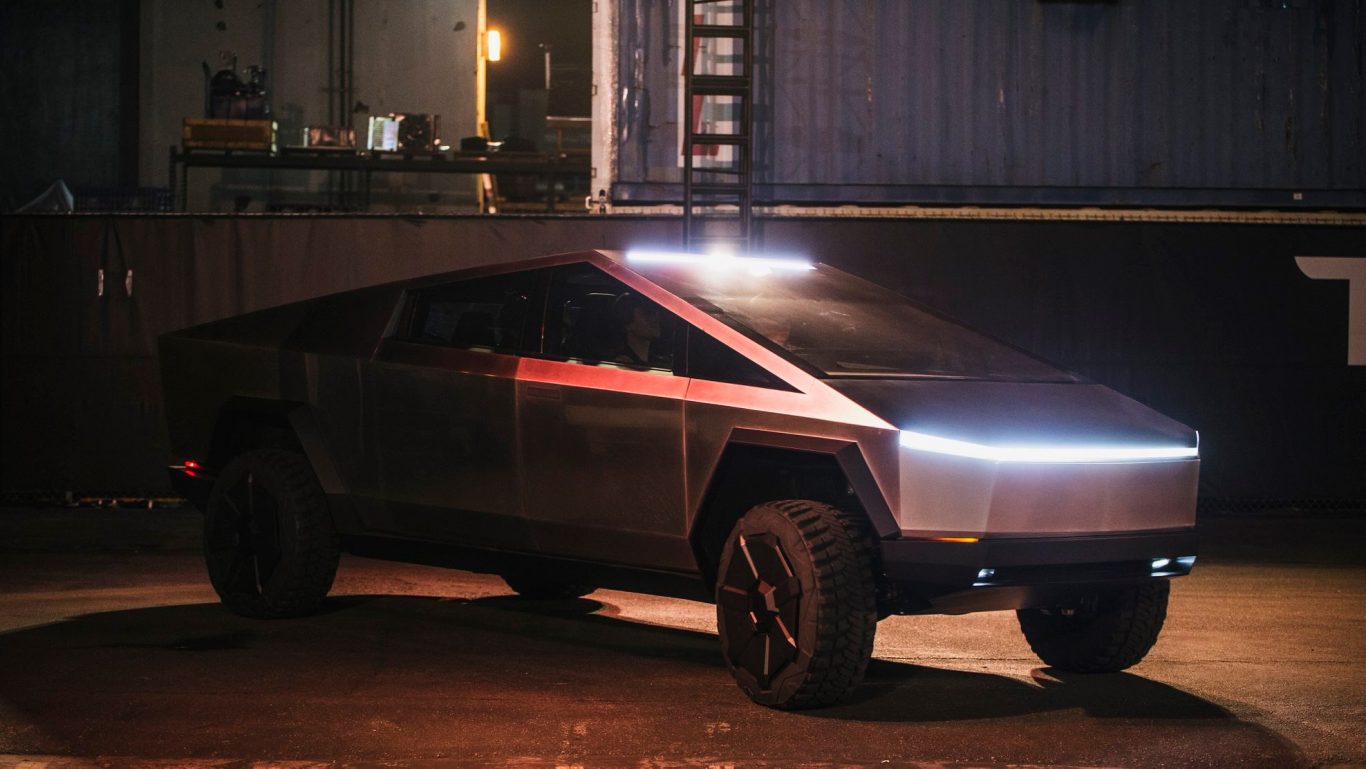 24/7 Wall St.
24/7 Wall St.